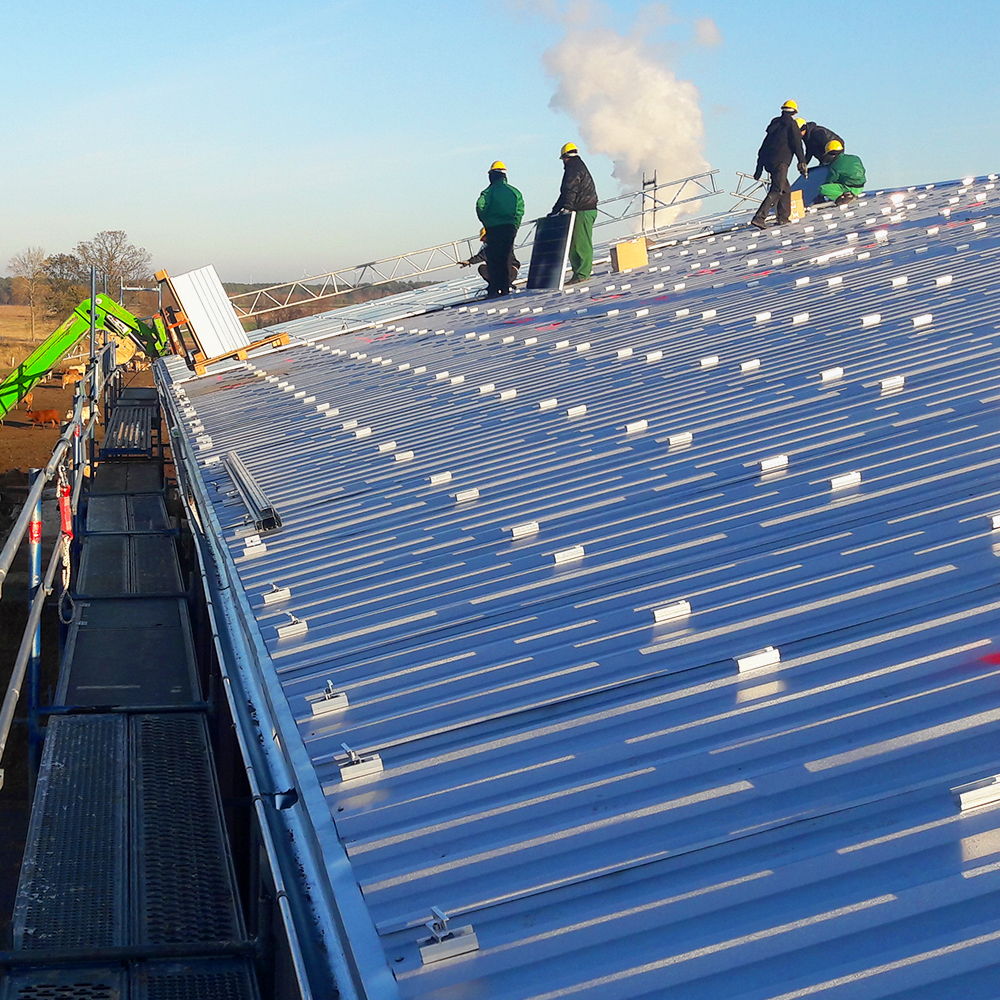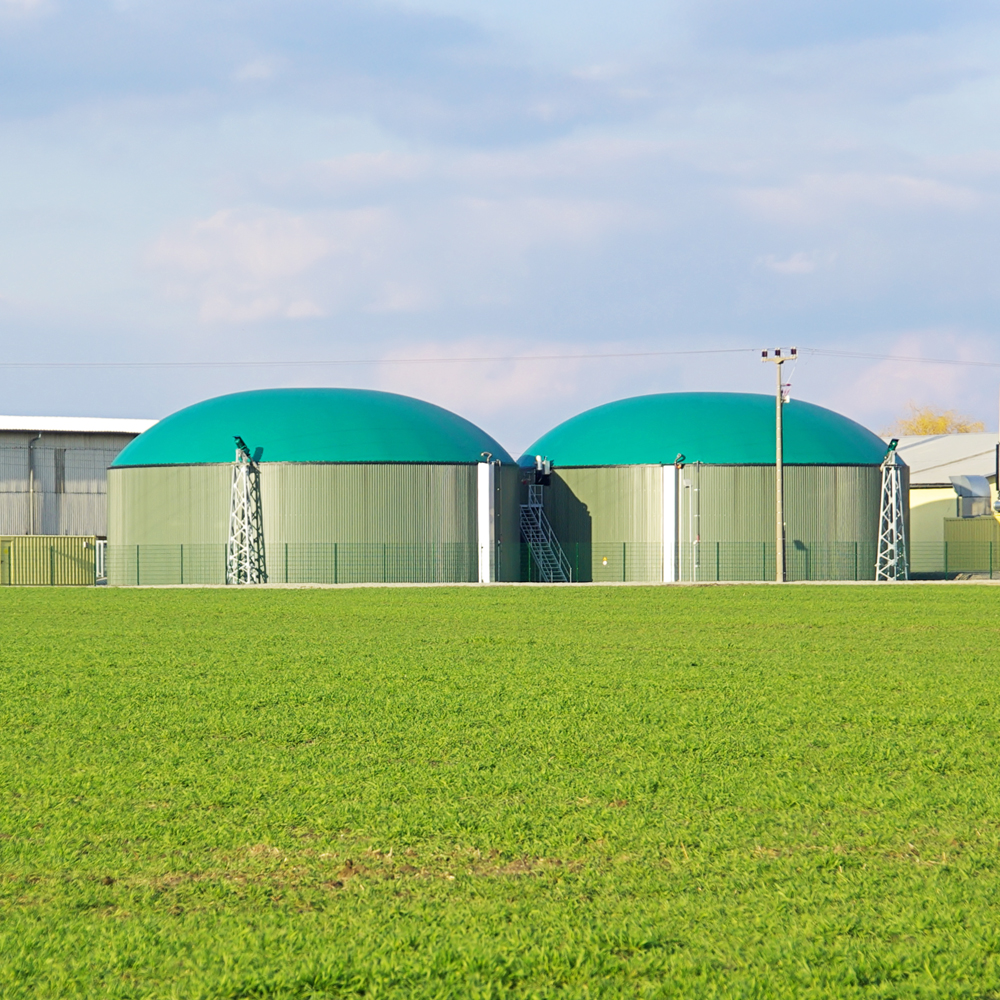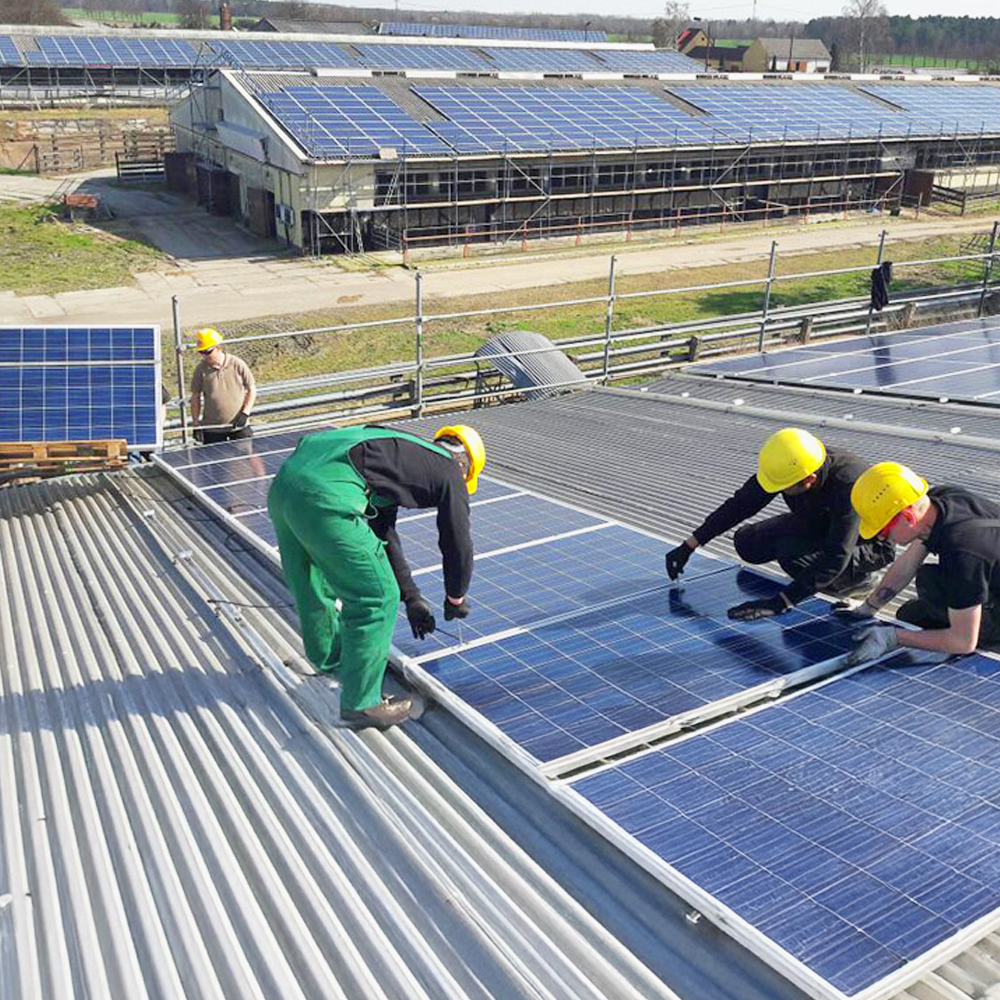Green Energy
„Energy is not lost.“
(Hermann von Helmholtz)
„Energy is not lost.“
(Hermann von Helmholtz)
Biogas is made up of the words bio for “life” and gas as a physical state. It refers to a flammable gas mixture that is created by the anaerobic fermentation of organic materials such as plant residues, manure or organic waste.
Research into biogas began as early as the 17th century, when Jan Baptista van Helmont discovered the existence of gases from organic material. In the 19th century in England, biogas from sewage sludge was used for street lighting.
In the 1970s, during the oil crisis, biogas regained importance as an alternative energy source. Technological progress have led to more efficient biogas plants and expanded areas of application in electricity and heat generation.
Today, biogas is an important component of renewable energies and makes a significant contribution to sustainable energy supply and to promoting a circular economy.
„You should face the sun, not the shadow.“
(Friedrich Nietzsche)
Photovoltaics is derived from the ancient Greek phos for “light” and volta as a unit for electrical voltage. It means the direct conversion of solar energy into electrical energy using solar cells.
The photoelectric effect was discovered in 1839 by the French physicist Alexandre Edmond Becquerel. In 1905, Albert Einstein successfully explained the photoelectric effect, for which he received the Nobel Prize in Physics in 1921.
In 1954, the first silicon cells with efficiencies of over 4 percent were produced. In the 1970s, the topic of solar energy also became increasingly economically interesting.
Today, photovoltaics are something like the latest trend in electrical engineering and an indispensable part of Germany's electricity architecture of the future.





